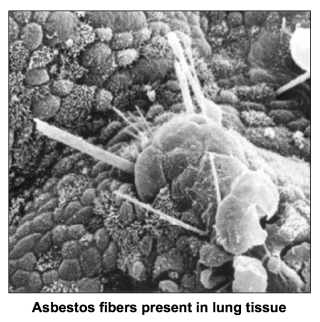 A new German study published in the
European Respiratory Journal sought to determine if the fiber burden in the lungs of persons exposed
to asbestos decreased over time. Researchers found that the passage of
time from a person’s last exposure did not correlate to a decrease
in the amount of asbestos fibers in the lung. Whether three years (the
shortest interval of the patients tested) or 29 years (the longest), the
number of asbestos fibers remained constant.
A new German study published in the
European Respiratory Journal sought to determine if the fiber burden in the lungs of persons exposed
to asbestos decreased over time. Researchers found that the passage of
time from a person’s last exposure did not correlate to a decrease
in the amount of asbestos fibers in the lung. Whether three years (the
shortest interval of the patients tested) or 29 years (the longest), the
number of asbestos fibers remained constant.
In reaching these findings, researchers also analyzed whether fiber type,
amphibole vs. chrysotile, madeany difference. Utilizing electron microscope
testing, researchers found a predominance of chrysotile fibers in 2/3
of the patients, and a predominance of amphibole fibers in only 1/3 of
the patients. Of great interest, the study found no difference in the
persistence or inability of the body to expel, chrysotile fiber as compared
to amphibole fiber.
The toxicity of asbestos stems from the body’s inability to break
down or expel the fibers. The fibers become lodged in the tissue of the
lung or abdomen and cause scarring which, over time, can lead to a worsening
disease process, such as pleural and/or peritoneal plaques, thickening,
effusion, fibrosis, and cancer.
Previous studies suggest that chrysotile fiber, accounting for 90 percent
of commercially-used asbestos, is more easily expelled from the body than
amphibole fiber. Based on these studies, the asbestos industry has claimed
that chrysotile fiber is much less dangerous and even “safe”
to use. The results of this study prove that chrysotile asbestos presents
the same dangers as amphibole asbestos. In other words, there is no such
thing as either “safe” or “less harmful” asbestos.
Read the full study here.